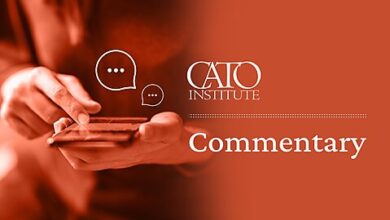Reforming the 1974 Budget Act’s Definition of Tax Expenditure

In addition to raising revenue, the tax code is used by politicians to subsidize myriad private activities, including politically popular energy sources, charitable giving, children, research, and housing. Congress and the Administration measure these programs through tax expenditure reports or lists of items that deviate from a “normal” income tax base.
A new report by Cato’s Chris Edwards explains why the way government scorekeepers tabulate tax expenditures biases the tax code against investment and growth and toward progressive forms of redistribution. Congress can fix this bias by reforming the definition of tax expenditure in the Congressional Budget and Impoundment Control Act of 1974 (1974 Act).
Current tax expenditure lists are misleading because they lump together two separate phenomena. Some tax expenditures move the tax code toward a consumption tax base by decreasing harmful economic distortions of double taxation built into the normal income tax system. Many other tax expenditures are true special interest carve‐outs and loopholes that grant privileges to some at the expense of others. Edwards estimates that about 48 percent of tax expenditure dollars are this type of special interest spending in the tax code.
As Congress considers additional reforms to the tax code, ways to lower tax rates, or increase revenues, it is critical to start with a definition of tax expenditures that does not confuse true loopholes with pro‐growth improvements. Edwards explains:
To guide reforms, policymakers need an accurate tabulation of loopholes in the tax code. The current Treasury and JCT tax expenditure lists fall far short. They depend on the faulty Haig‐Simons definition of income, which endorses the double taxation of saving and investment, and they depend on ad hoc rules reflecting a redistributionist bias. Claims that high earners gain the most from tax loopholes are off base. The claims stem from arbitrary choices made in producing the official tax expenditure lists.
Defining the tax base from which to measure expenditures is critical. The Haig‐Simons income tax base includes earned income plus other changes in net worth. This system taxes saved income at a higher effective rate than income that is spent immediately. A consumption tax base fixes this problem by taxing all income that is consumed only once.
I encourage you to read the entire report, which includes the history of how the long‐running academic debate over how to define the tax base still dictates current budget scoring. The report applies the discussion of the appropriate tax base to a series of proposed tax reforms, including the tax treatment of business investment, personal savings, health care, housing, and state and local finances.
I will highlight one point Edwards makes in passing: Treasury and the Joint Committee on Taxation (JCT) should change how they present tax expenditures. To facilitate this shift, Congress should amend the 1974 Act to specify that tax expenditures are to be measured from a comprehensive consumption tax base rather than from “gross income,” which currently guides the inconsistently defined normal income tax base used by JCT.
Section 3(3) of the 1974 Act (2 U.S.C. 622(3)) states:
The term “tax expenditures” means those revenue losses attributable to provisions of the Federal tax laws which allow a special exclusion, exemption, or deduction from gross income or which provide a special credit, a preferential rate of tax, or a deferral of tax liability; and the term “tax expenditures budget” means an enumeration of such tax expenditures.
By replacing “gross income” with “consumed income,” Congress could ensure that future tax expenditure reports only include those provisions which are truly loopholes in the tax code.
Alternatively, Congress could add a sub‐section requiring any agency that produces a tax expenditure report also produce a companion report measuring tax expenditures from a comparable consumption tax baseline. A second expenditure report could also be done at the request of the committees of jurisdiction or rule changes. As Edwards notes, the current federal tax code is a hybrid of the consumption and income tax systems. At a minimum, tax expenditures should be measured from the two tax bases and presented on an equal footing.
A better understanding of tax expenditures—the good and the bad—is critical in any discussion of future tax reform. Congress can ensure that future tax policy debates are better informed by clarifying how scorekeepers define deviations from the normal tax base.





